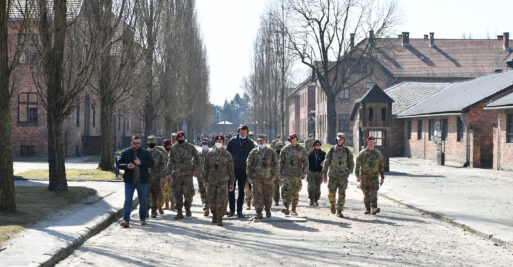
Arlington National Cemetery is a popular site for dark tourism in the U.S.
Credit: tripadvisor.com
Many people are starting to plan summer travel. Perhaps you’re drawn to visiting places known for tasty cuisine, spectacular nature or cultural juggernauts. But one type of tourism not often discussed is what’s been labeled “dark tourism,” “grief tourism,” or “thanatourism.”
A 2022 study detailed that “Dark tourism comprises visiting real or recreated places related with death, suffering, disgrace or the macabre.” Examples of dark tourism include visiting well-known cemeteries, sites of battles or murders, museums dedicated to genocide, slave heritage plantations, catacombs with human remains, and so on. People may be propelled to visit these places because of an interest in the historical and cultural significance, a personal connection to the place, a desire to remember and honor the events, curiosity, or a fascination with death and the macabre. In the book “Horror and Human Tragedy Revisited: The Management of Sites of Atrocities for Tourism,” the authors speculate that the three main reasons people engage in dark tourism are curiosity about the unusual, attraction to horror, and a desire for empathy or identification with the victims of atrocity.
Dark tourism is incredibly common, with 82% of Americans saying that they have visited some site of dark tourism in their life. Before Covid-19 disrupted many travel plans, that number seemed poised to rise as places like the 9/11 memorial saw a record number of 6.6 million visitors in 2018, and the Auschwitz Memorial and Museum saw an average of 2 million visitors each year. Time will only tell how dark tourism fares in a post-Covid world as travel returns to normal, but it may become more popular. Dark tourist Jodie Joyce spoke with the NY Times to share her perspective that “When the whole world is on fire and flooded and no one can afford their energy bills, lying on a beach at a five-star resort feels embarrassing.”

Dark tourists visit the Auschwitz Memorial
Credit: auschwitz.org
But while dark tourism can be an important way to grieve and honor lives lost, it can also go too far, particularly when people are drawn to visit sites of recent tragedy or particularly gruesome deaths. Some may balk at the number of tours offered in Hollywood based on exploring Charles Manson’s favorite haunts or the houses where his murders took place. This can risk glorifying the violence.
In 2002, the small English town of Soham issued public pleas for dark tourists to stop visiting after they were flooded with tens of thousands of visitors following the highly publicized murder of two 10-year old girls. Locals were similarly infuriated after a 2018 London tower block fire killed 71 people and dark tourists began to visit, some of them posing for selfies. Visiting the sites of recent or particularly gruesome tragedies can cross a line into voyeurism.

 The Shadow Side of Dark Tourism
The Shadow Side of Dark Tourism


 How Dare You Die Now!
How Dare You Die Now!

 “Help Me, Helen”
“Help Me, Helen”














